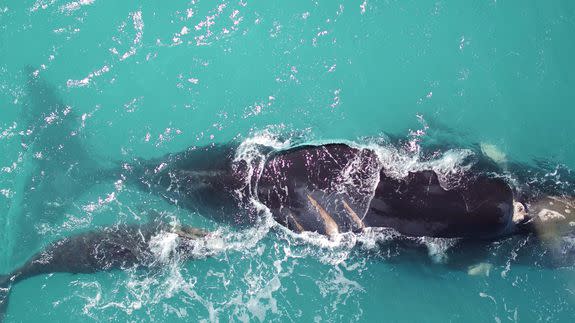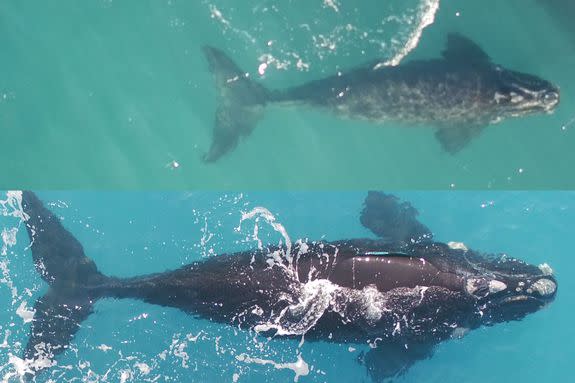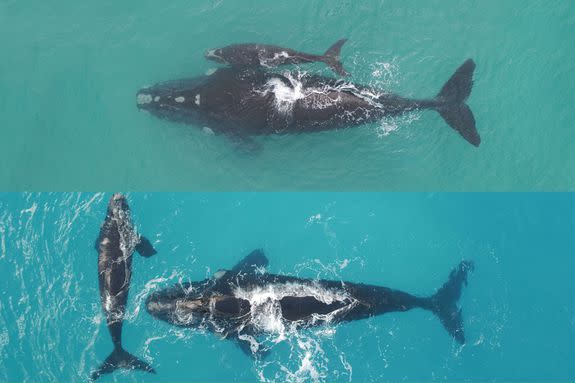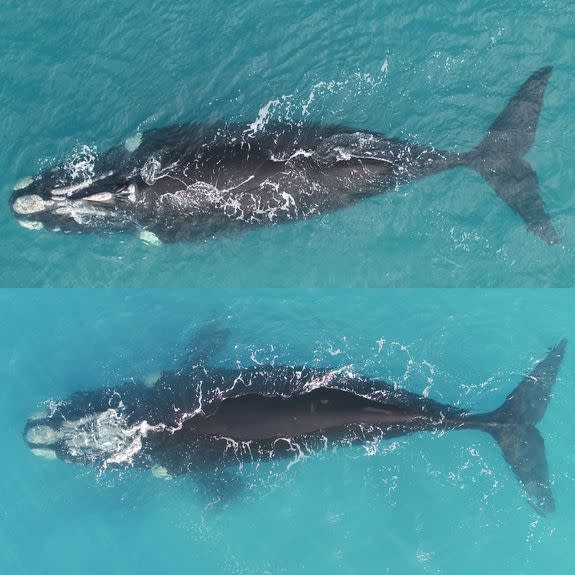'Drone doctors' are helping bring whales back from brink of extinction

The southern right whale was given its name because tragically, it was the "right" whale for whaling. The animals tended to swim close to shore, making them easy marks for whalers who hunted them to the brink of extinction.
Thanks to drones, researchers are helping the southern right whale make a comeback while keeping an eye on the effects of climate change.
SEE ALSO: Climate activists shut down 5 tar sands oil pipelines
Researchers from Murdoch University, supported by WWF Australia, are monitoring the whales as they breed in the Great Australian Bight in the country's south.
Fredrik Christiansen, a researcher at Murdoch University, told Mashable southern right whale populations are recovering, albeit slowly. In Australia, they are thought to number only around 3,500.

Image: FREDRIK CHRISTIANSEN/MURDOCH UNIVERSITY
"Although the humpback was hunted almost as much, the humpbacks are 10 times as many now as the southern right whale," he said. "They are still endangered. There are still populations in the North Atlantic where they are critically endangered."
When the whales visit Australia, they typically breed and aggregate along the south coast of the country from late May to late October. That gives scientists the opportunity to use drones to monitor their health.
Christiansen said the technology has proved invaluable. "To get this kind of information before you would need a helicopter or a plane — it was expensive, noisy and involved some risk for the operator," he added.
The team fly DJI Inspire 1 Pro drones off the cliffs of the Great Australian Bight with the permission of the Aboriginal Lands Trust, allowing them to minimise disturbance to the animals while getting high resolution images and measurements.
After months of monitoring, the team found female southern right whales lose an extraordinary amount of body mass while feeding and fattening their calves. Some females lose more than half a metre in width roughly, Christiansen explained, while the calves can grow more than two metres (seven foot) in length.
"When the whales leave, the females look quite emaciated," he said. "There is so much energy being transferred between the female and the calves, especially when they're not feeding." During this time, the mother whales rely entirely on their fat stores.

Image: FREDRIK CHRISTIANSEN/MURDOCH UNIVERSITY
Ultimately, the team hope to discover how climate change will affect the whales. For example, how krill production in their Antarctic feeding ground — the abundance of which will likely be impacted by the rise in sea temperature and receding sea ice — will affect their condition once they arrive in Australia.
Monitoring these factors can tell scientists about the probability of the whales surviving and reproducing. Southern right whales only calve every three to four years.
"We can also compare our population to other populations to see if the Australian population is doing better," he added.

Image: FREDRIK CHRISTIANSEN/MURDOCH UNIVERSITY
To continue the work, the WWF is campaigning to raise additional funds.
"This [drone] technology is getting picked up all over the world by whale monitoring groups," Christiansen said. "In a few years, we're going to know the condition of most baleen whale populations around the world."
